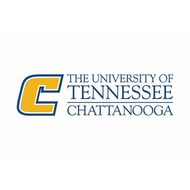
(View Complete Item Description)
Early in the Spring 2020 semester, University of Tennessee at Chattanooga students in my Ancient to Modern Latin American Visual Culture Art History course embarked upon an intensive first-hand visual analysis and research project that involved working directly with original artifacts from Ancient Latin America housed within the University of Tennessee at Chattanooga Library’s Special Collections. This unique opportunity and the publication of their findings were made possible thanks to the generous support and assistance of Special Collections Director Carolyn Runyon and her dedicated staff.
By examining the wide array of Pre-Columbian objects in the George and Louise Patten Salem Hyde Papers and Cultural Artifacts Collection, these upper division students formed small research groups dedicated to specific artifact types, such as human figurines, animal figurines, tools and lithics, vessels, anthropomorphic ceramics, replicas, and sherds. They carefully recorded their original observations of their selected objects of study in written field notes, photographs, and drawings. Later, they compared their initial observations with preliminary collection data developed independently by Archaeology students of Dr. Andrew Workinger, leading to further questions and insights surrounding these extraordinary pieces predominantly from pre-contact indigenous cultures of the Central and Intermediate regions of Latin America that today comprise Costa Rica, Ecuador, Panama and Colombia. Building upon their analysis, the Art History student research groups then re-examined their selected artifacts through analytical frameworks focused on Gender and the Body, Color, Pattern and Materiality, Spirituality and the Object, Form and Function, and Identity and Representation. In presenting their findings to their peers, students received feedback that allowed them to refine their analysis and develop the original individual and group catalog essays that comprise this exhibition publication. Their research sheds further light on the extraordinary value and diversity of the ancient artifacts of Latin America that uniquely form part of UTC’s Special Collections, as well as the innovative power of interdisciplinary research and collaboration.
Material Type:
Diagram/Illustration,
Primary Source
Author:
Olivia Wolf




















